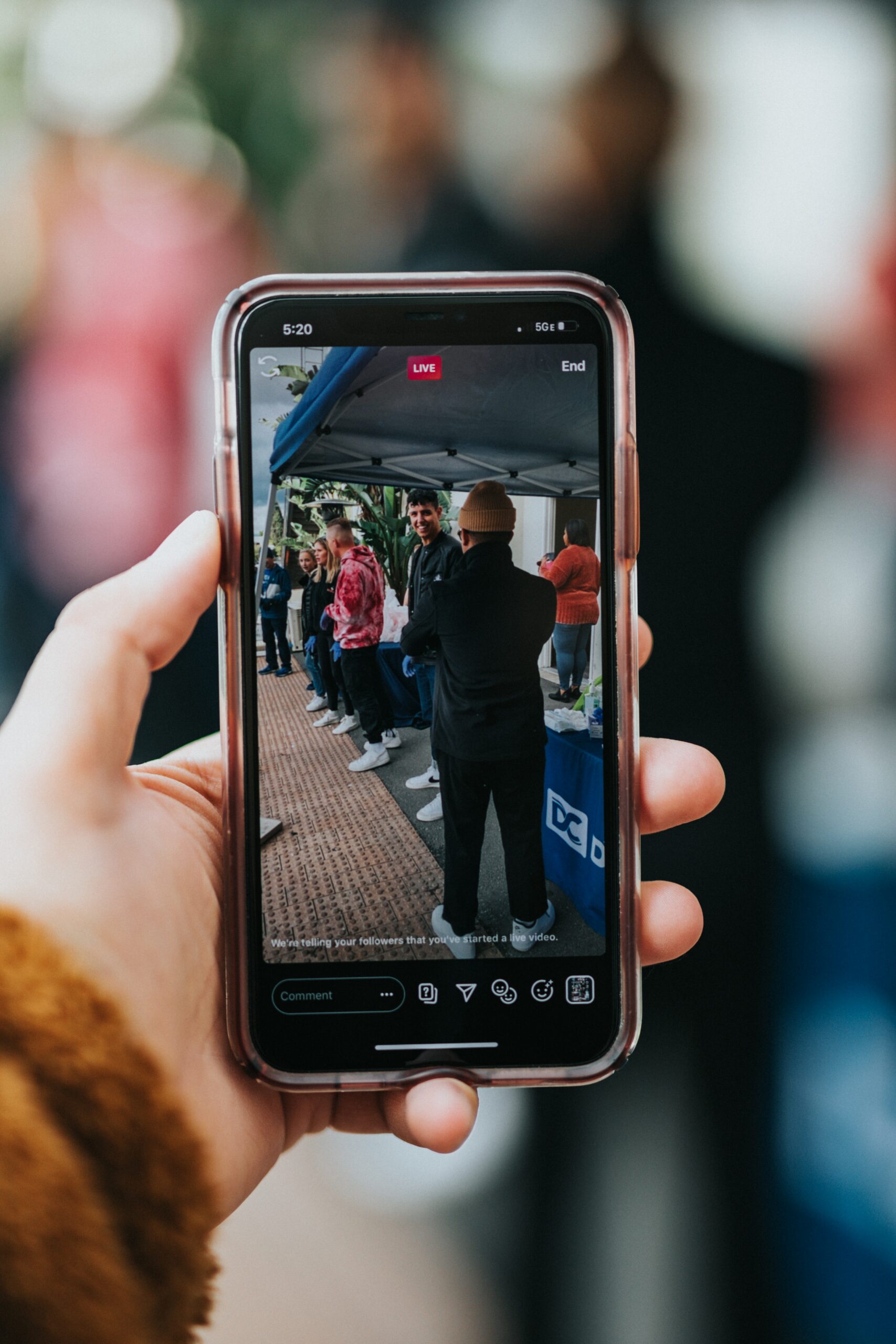From time to time, I participate in speaking engagements and, in the time of COVID-19, virtual speaking engagements. I recently participated in a Customer Experience Day webinar with two other leaders in our field, Joe Pine and Lou Carbone. I learned a few things that I would love to share with you, and discussed on my most recent podcast, regarding where we are now with Customer Experience and, perhaps more importantly, where we are heading.
So, me, you know. You might remember how I came to this field of Customer Experience almost 20 years ago after years of working in the corporate world. Furthermore, you have likely read my schtick about how we should take these ideas “beyond the philosophy” and into the real world. However, I realize that you might not be as familiar with these other blokes. So, allow me to introduce my other colleagues.
Lewis Carbone is a Customer Experience expert and speaker, and founder of Experience Engineering™. If you haven’t already, I suggest you read his book, Clued In: How to Keep Customers Coming Back Again and Again. In it, Carbone shares his methodology for designing clues into your Customer Experience that signal to customers that you have what they want, so they come back for more. We hosted him to discuss this on a podcast not long ago. As a pioneer in our field, Carbone was one of the first to point out that you have a Customer Experience no matter what; the difference is that some organizations are deliberate (or haphazard) about what that experience is. He was also one of the first proponents of having an “outside-in” approach regarding the experience that you deliver to customers, which, my regular readers know, is one of the principles of which I am keenly fond. Carbone thinks that right now during the COVID-19 Pandemic is probably the most exciting time for Customer Experience Management advancement that he has ever seen because people are more sensitive to the experiences they have in their lives. Furthermore, it has brought awareness that an organization can manage its experience to create an emotional bond with customers.
 Joe Pine is the author of The Experience Economy that started it all. As another pioneer for Customer Experience, Pine works with his colleague Jim Gilmore at Strategic Horizons, LLP. Pine and Gilmore have been working with clients worldwide to stage experiences that provide value for customers longer than I have, which is saying something. Pine believes organizations should understand that experiences are a distinct economic offering, not just better service. An authentic, distinctive experience is more than providing good service or being “nice.” Pine says Customer Experiences should be memorable, personal, and emotionally engaging, so customers value the time they spend with your company. In other words, Pine says if customer service is time well-saved, Customer Experiences are time well spent.
Joe Pine is the author of The Experience Economy that started it all. As another pioneer for Customer Experience, Pine works with his colleague Jim Gilmore at Strategic Horizons, LLP. Pine and Gilmore have been working with clients worldwide to stage experiences that provide value for customers longer than I have, which is saying something. Pine believes organizations should understand that experiences are a distinct economic offering, not just better service. An authentic, distinctive experience is more than providing good service or being “nice.” Pine says Customer Experiences should be memorable, personal, and emotionally engaging, so customers value the time they spend with your company. In other words, Pine says if customer service is time well-saved, Customer Experiences are time well spent.
What Are Some of the Mistakes of the Past for Customer Experience?
The three of us, along with moderator Chantel Botha of Brand love, discussed in the webinar and a recent podcast some of our past experiences working in this industry, where we are today, and where we are going. Botha began by asking us where we have failed and what we learned from it.
When it comes to failure, my most significant ones are assuming that people are in the same mindset as mine. For instance, when I presented to a German insurance company about how they should use emotions in their experience, the clients asked me for proof that it would work. Unfortunately, at that time, I didn’t have any; I just believed that it worked, with or without evidence. Everyone did not share that mindset, and they still don’t. You have to prove it works. From that moment on, and this occurred back around 2005, my company links our Customer Experience efforts to proof so that the champions of Customer Experience are not caught out as I was all those years ago in that German conference room.
When I shared my story, I learned that Pine was empathetic to my plight. He says he often didn’t understand why other people didn’t believe in the impact of providing an emotionally engaging Customer Experience the way he did. However, he didn’t go the data route to prove it. Instead, Pine would develop frameworks. He and Gilmore would develop frameworks that describe what’s happening and prescribe what the organization should do about it. These frameworks would feature shining examples of these concepts at work to help convert the non-believers.
Often, Pine would have clients acknowledge that their philosophy was innovative but then ask who else had tried it. Pine found this frustrating because if it’s creative, it means that not a lot of companies had tried it. The challenge he encountered was getting senior leaders in interested organizations to feel comfortable enough being the first ones to take Customer Experience as a value enhancement in the marketplace—even if it might lead to failure. Failure is an always-present possibility, Pine says, because you aren’t sure how it will land until you get a real, live human being in the experience. Pine says he tells companies to save some of the budget (around 20 percent) to fix things in the experience that didn’t produce the reaction you wanted.
Carbone says that he has failed in the past by confusing the issue for people, clouding the real meaning of what Customer Experience means. There is a lot of discussion and perhaps not the depth of understanding of how different an experience economy of today is versus the industrial age of the past. He thinks a new distinctive lexicon is essential to clear up these misconceptions in the world of Customer Experience.
Carbone’s primary philosophy works with constructs around Clue Consciousness, which describes how their unconscious processing of Customer Experience signals drives customer behavior. These clues affect our emotions, shape our attitudes, and guide our actions. 
Many organizations confuse process improvement and defect elimination with what experience management is, per Carbone. He says we need to begin to understand customer emotions and what stimulates them. Managing that critical aspect creates real power in experience management. Building systems that align the clues and signals goes well beyond process improvement. Customer-driven organizations that are inside the mind and heart, and soul of the customer are the goal. These companies know what customers feel even when the customers don’t know themselves. Moreover, how they think of us as a company is not as crucial as how the company makes customers feel about themselves, which, in turn, is how customers ultimately think about the brand.
What Are We Going to See Next in Customer Experience?
As the discussion moved on to the future of Customer Experience, I brought up the idea of Customer Science. You might recall that I recently discussed Customer Science on a podcast. It appeals to me because it uses a data-driven approach. Customer Science is a product of a perfect storm of artificial intelligence, the information provided by Big Data, and the interpretation of that data through Behavioral Science. This combination of technology and psychology, or understanding what people really do, makes it possible to anticipate and predict what the customer will do through data use.
These psychometric profiles have outstanding value for your Customer Segmentation efforts, an area where most organizations could use some work. Moreover, it enables you to anticipate customer needs and provide them automatically, particularly in digital experiences. Amazon does this, and they do it well, especially with me. Between my activities with the platform and associated products to their brand I use, Amazon knows everything about me from what I buy and eat to when I go to bed and even how many people ring my doorbell. These data points enable them to have a profile of me and provide me with helpful suggestions that I appreciate.
 Pine sees that the COVID-19 Pandemic accelerated the shift from physical to digital experiences. However, he believes that the future of Customer Experience is the fusion of the two. An example of what he means is the platform Twitch, where people play video games while recording it and then show it to other people. The critical experience of Twitch is the social interactions that people have watching somebody play a video game. With all the possibilities of what Twitch and other platforms provide, Pine says we will see fewer people going to live events, whether it’s a conference or a festival or a concert, and many more people attending it “live” online. Those watching the live event online will also interact and have a different (and potentially better) overall experience with the amplification of that live event.
Pine sees that the COVID-19 Pandemic accelerated the shift from physical to digital experiences. However, he believes that the future of Customer Experience is the fusion of the two. An example of what he means is the platform Twitch, where people play video games while recording it and then show it to other people. The critical experience of Twitch is the social interactions that people have watching somebody play a video game. With all the possibilities of what Twitch and other platforms provide, Pine says we will see fewer people going to live events, whether it’s a conference or a festival or a concert, and many more people attending it “live” online. Those watching the live event online will also interact and have a different (and potentially better) overall experience with the amplification of that live event.
Pine says that the current crisis is accelerating is the recognition among people that what we really value are those shared experiences we have with our loved ones, friends, and colleagues. We want more of those and less stuff that sucks up our time, which we don’t want to waste. We spend that time on the meaningful experiences that we value.
Carbone thinks that the future holds an understanding that experience management is a way of doing business embedded in its values. He feels that business is operating on an “industrial age” platform but living in the “fusion economics” age. Fusion economics refers to a time in business when we have a greater depth of knowledge of the science and art of experience, what Carbone refers to as experience management 2.0. Carbone says that experiences are no longer linear but more like a pinball machine, presenting challenges in creating consistency with an emotional bond. Moreover, it is not a siloed responsibility but instead runs throughout the organization and across departmental lines. For instance, a restaurant client of Carbone’s combines the HR and Marketing departments because they realized that their people were their single greatest asset. Carbone says fusion economics enter into an era of virtuality, which understands the elements and role of technology and how to humanize it. This age requires understanding the delicate balance needed for human nature and needs and how the technology works well with these (and how it doesn’t). Perhaps most importantly, this age requires the realization that product attributes, features, and benefits have less influence on consumer decision making than what customers process unconsciously, emotionally, and from the perspective of the total experience.
What Should People Focus on Right Now?
Next, the discussion turned to what people can do or focus on right now to prepare for this future. For my part, I reiterated how I think a focus on how your efforts to create an emotionally engaging experience for customers leads to results. After all, why would anyone support all this if you cannot prove an ROI? In addition to results, I would also encourage people to consider things like the customer’s lifetime value vs. the costs involved with implementing the changes to the experience you propose. Often, by comparison, the value of keeping that customer for the long-term far outweighs the expense in the short-term.
Moreover, we’ve never implemented a Customer Experience program that doesn’t save money because it reduces the costs caused by failures, overlaps, and gaps in current experience. Furthermore, organizations often spend too many resources fixing what’s wrong rather than investing in the best opportunities to have a higher return. In other words, if you can start to identify the real ROI for your Customer Experience program, you will not only find more significant opportunities, but you will also get a hell of a lot more support.
Carbone urges businesses to consider the William Arthur Ward quote that said, “The pessimist complains about the wind; the optimist expects it to change; the realist adjusts the sails.” Carbone says it is time to adjust the sails of Customer Experience. He urges businesses to deepen their understanding of the new order and let go of industrial-age thinking that looks at the experience as a service and instead becomes customer-driven and going beyond customer-centricity. Carbone also thinks it would be wise to understand how customers think versus what they think by delving into unconscious thoughts and emotions. Finally, he recommends adopting a vision of a return on strategy and creating experiential value that will result in ROI. It is crucial to become champions of Customer Experience and convince people that building a culture that understands that the ultimate value the organization creates is in the experiences they provide.
to consider the William Arthur Ward quote that said, “The pessimist complains about the wind; the optimist expects it to change; the realist adjusts the sails.” Carbone says it is time to adjust the sails of Customer Experience. He urges businesses to deepen their understanding of the new order and let go of industrial-age thinking that looks at the experience as a service and instead becomes customer-driven and going beyond customer-centricity. Carbone also thinks it would be wise to understand how customers think versus what they think by delving into unconscious thoughts and emotions. Finally, he recommends adopting a vision of a return on strategy and creating experiential value that will result in ROI. It is crucial to become champions of Customer Experience and convince people that building a culture that understands that the ultimate value the organization creates is in the experiences they provide.
Pine agrees that you should have the right mindset like Carbone suggests. If you have that, Pine says, then everything else can follow. The first thing that people can do is recognize that you’re in the experience business, not services. The second thing is to determine what you would change if you were to charge an admission fee for your experience. Pine says this is crucial is because when you “charge admission,” it inspires you to create an experience worth having. Pine also encourages people to understand that because experiences happen inside of us, it’s a reaction. Pine says there is not enough focus on customizing to the individual customer, the target of that customer-centricity. If you customize your goods or services and your experiences, you’ll thoroughly engage people.
We have come a long way with the concept of Customer Experience from its beginnings back in the late 80s and early 90s. Even since I joined the movement back in 2002, the ideas of what a Customer Experience is, how it works, and what you can do to optimize it have changed a lot. What has not changed through all of these transformations is the need to be deliberate about what you are trying to deliver and the emotional connection with customers you want to create. That is a foundational element that all of us “pioneers” of Customer Experience believe. That can set up your organizations for success to elicit the customer behavior you want that provides the customer-driven growth you need.
To hear more about this idea in more detail, listen to the complete podcast here.
Colin Shaw is the founder and CEO of Beyond Philosophy, one of the world’s leading Customer experience consultancy & training organizations. Colin is an international author of six bestselling books and an engaging keynote speaker.
Follow Colin Shaw on Twitter @ColinShaw_CX

